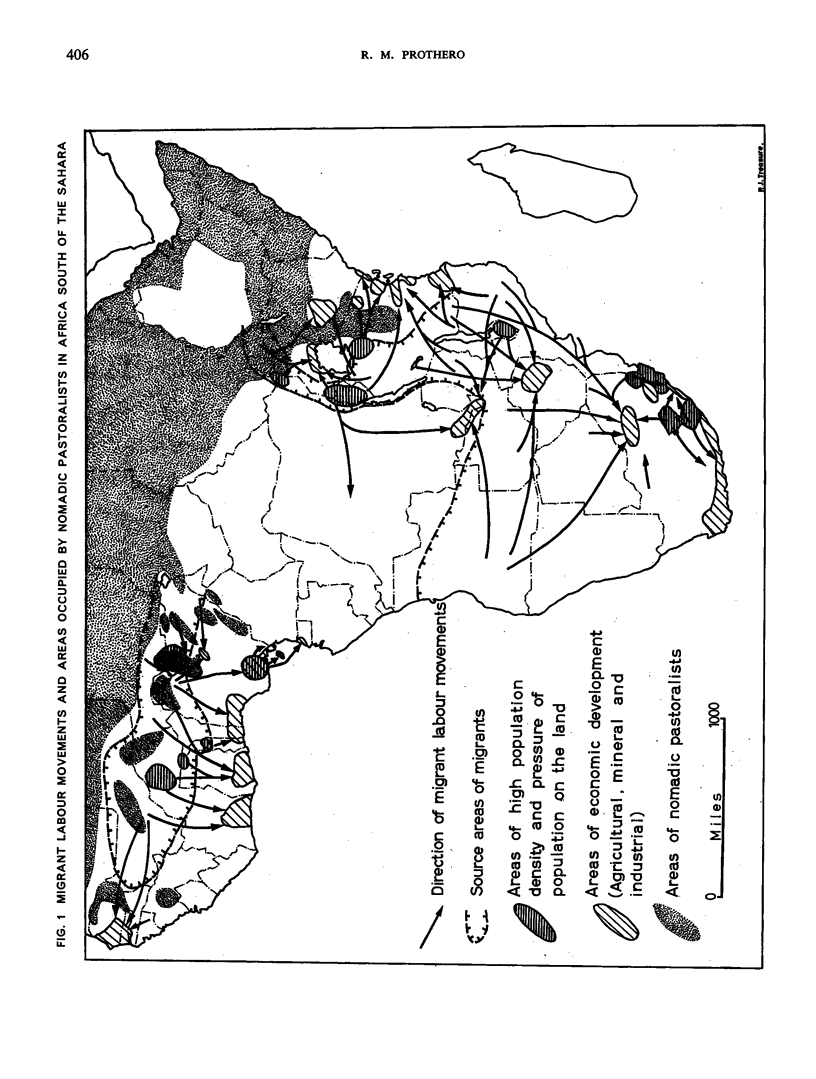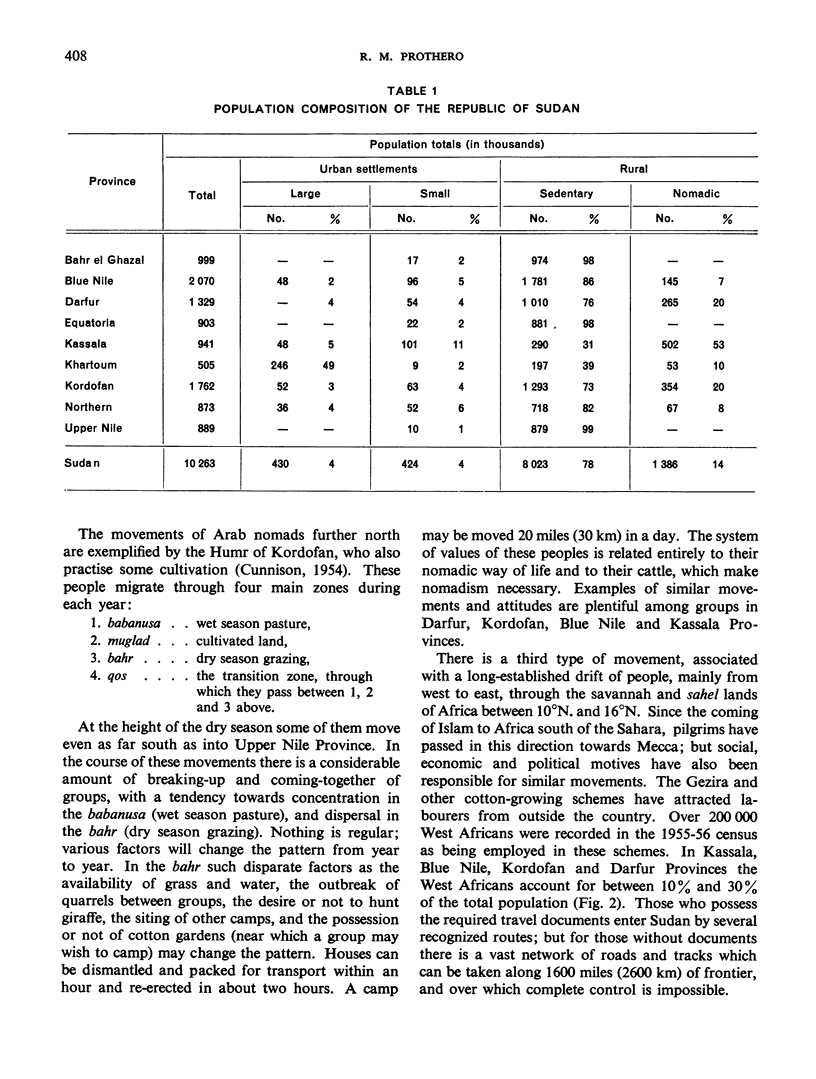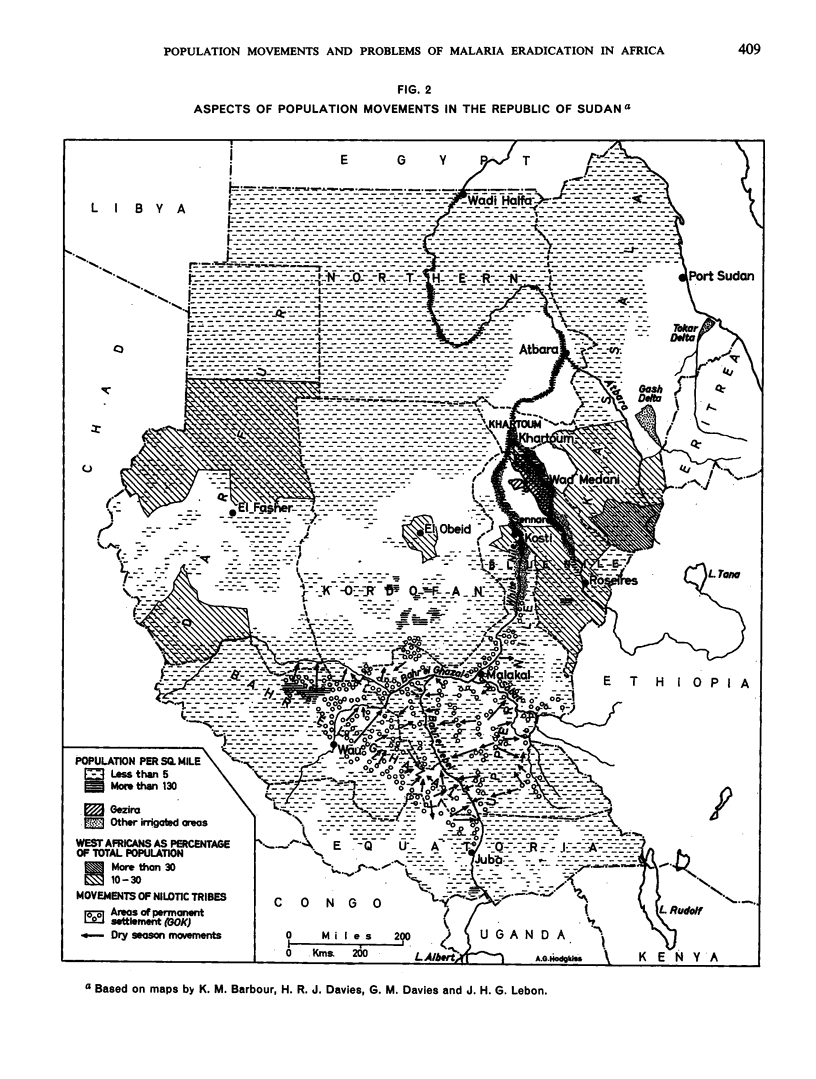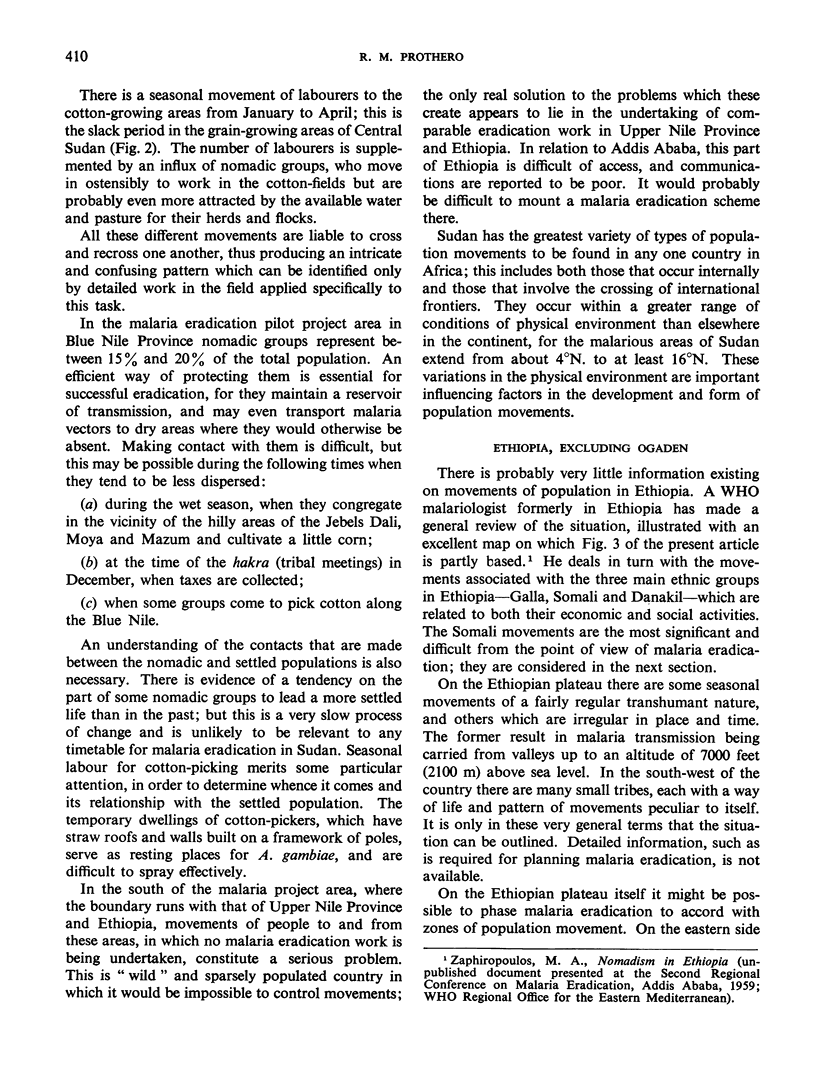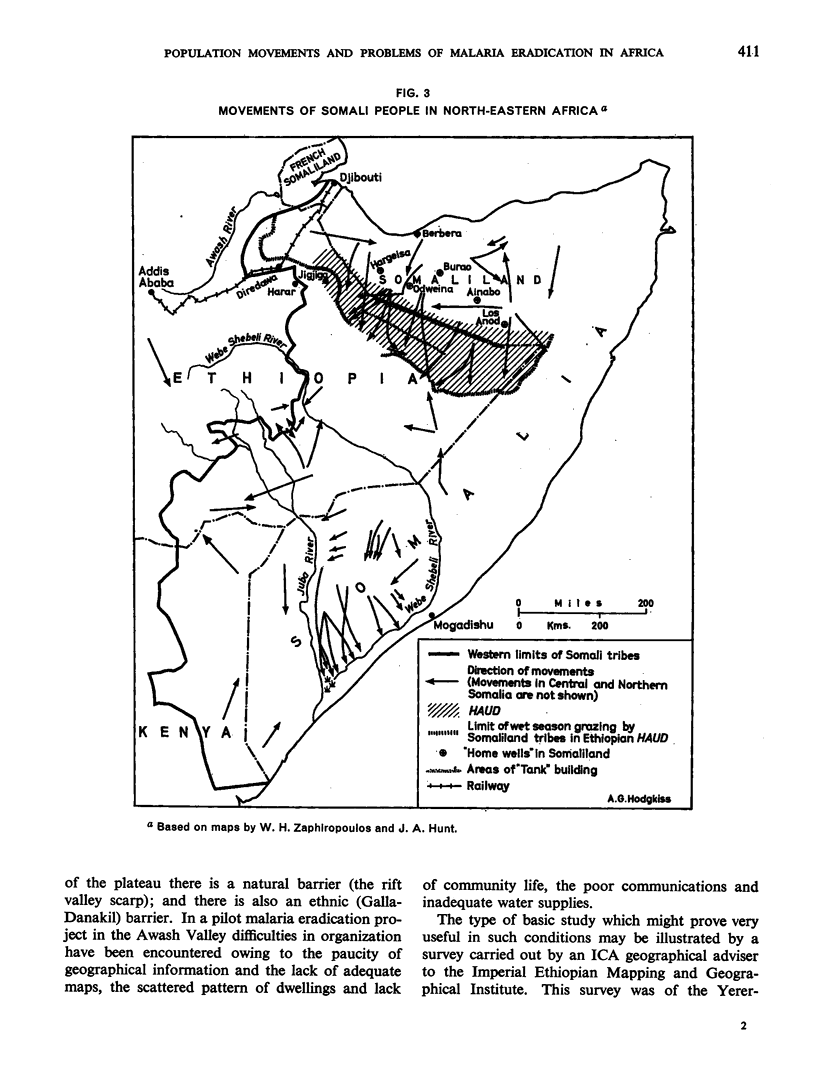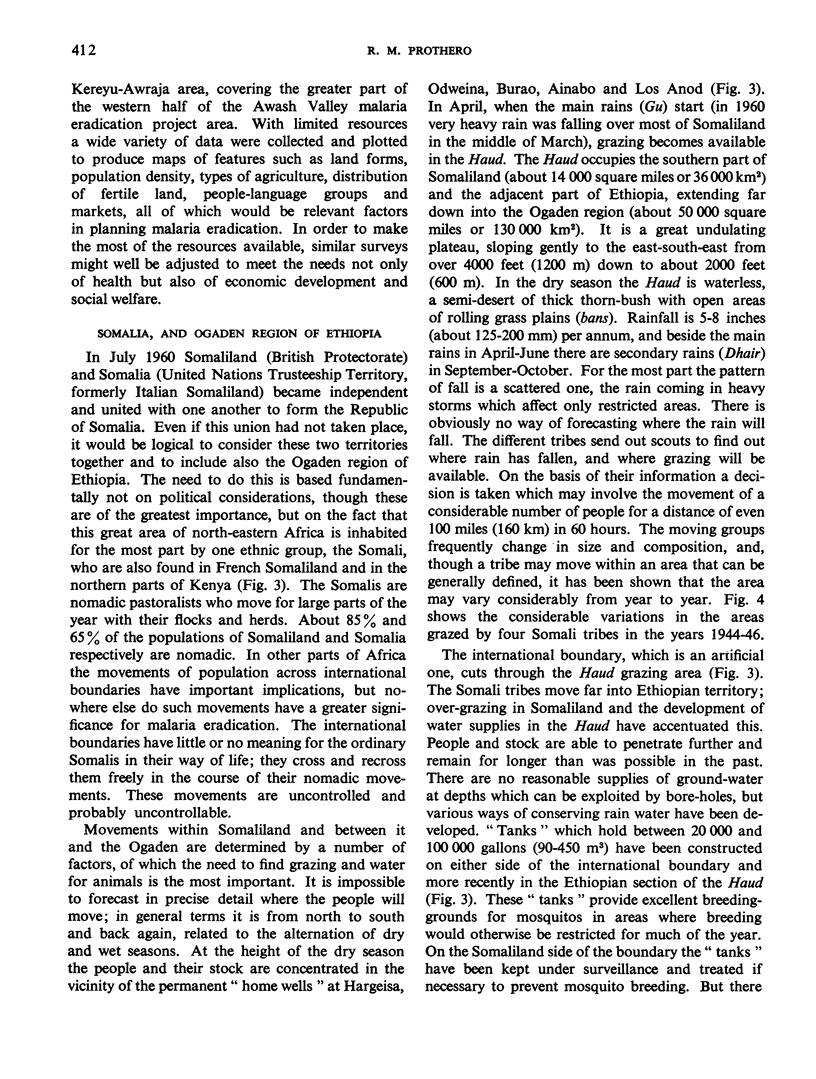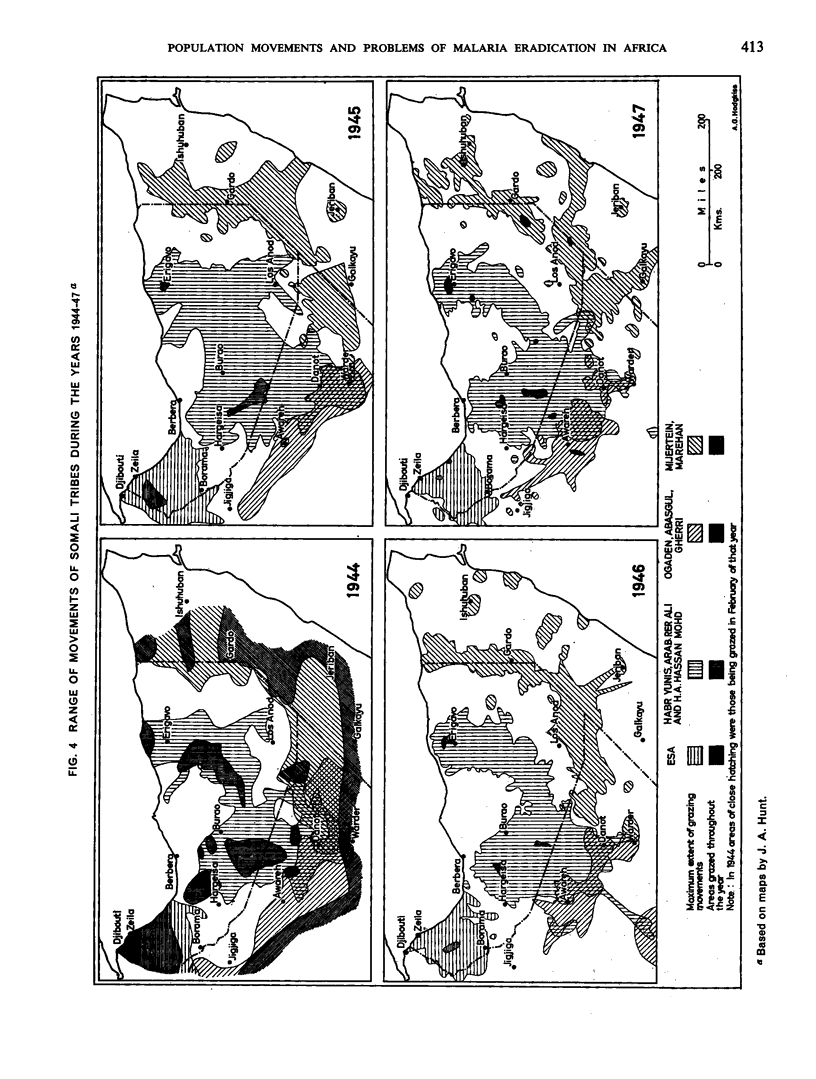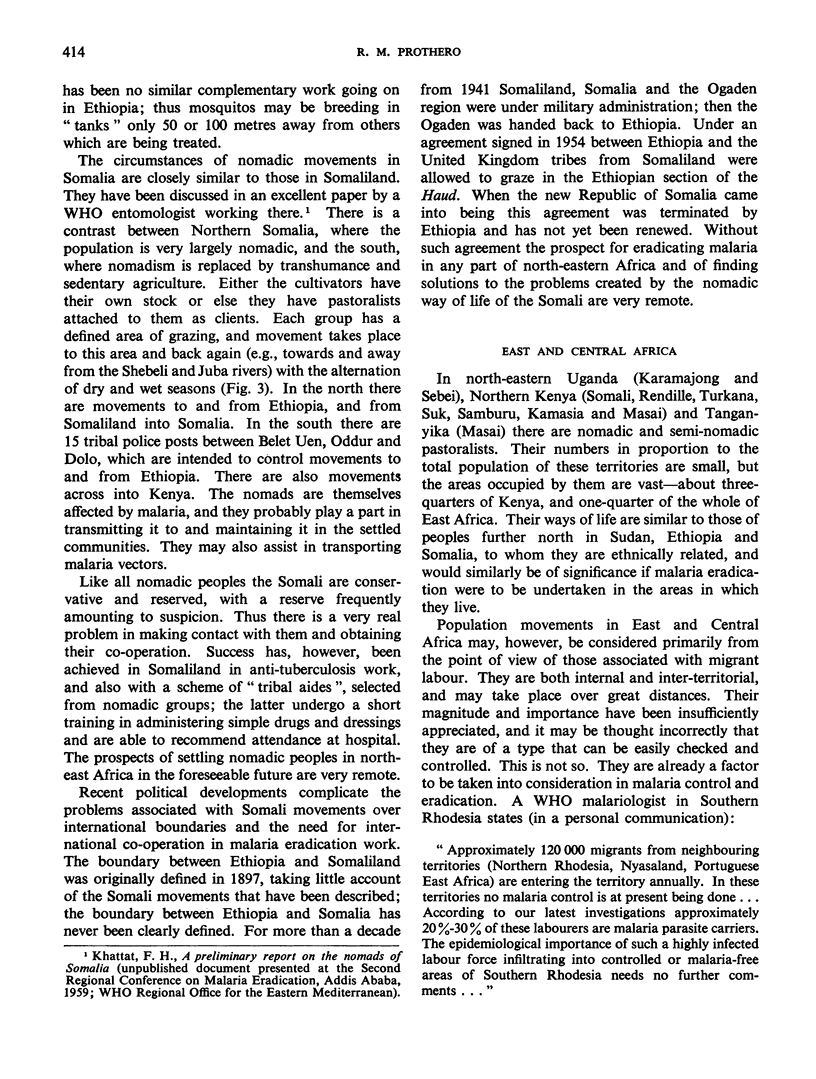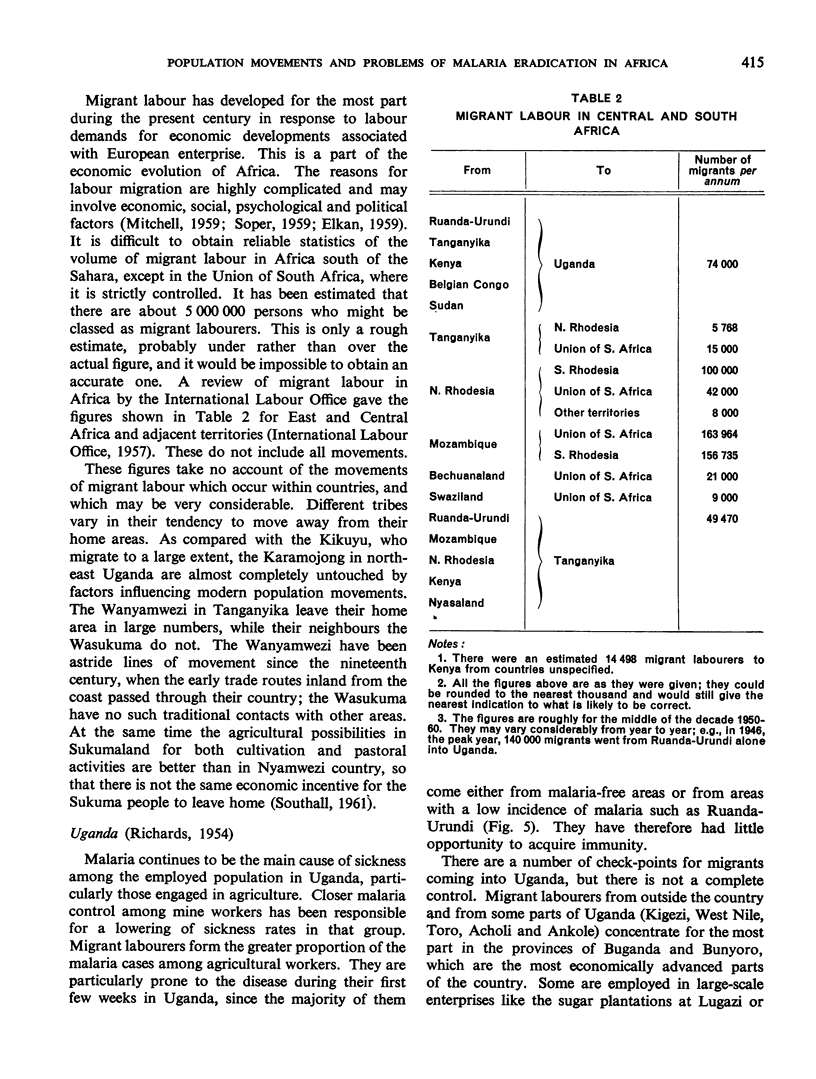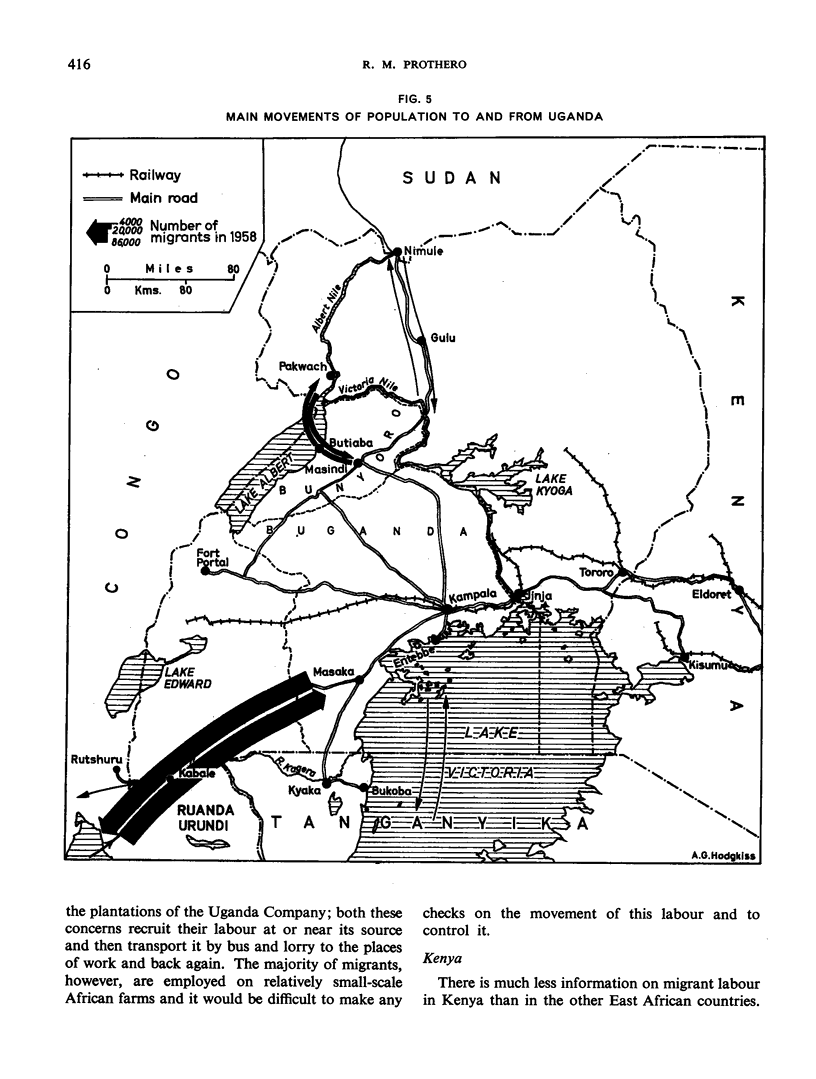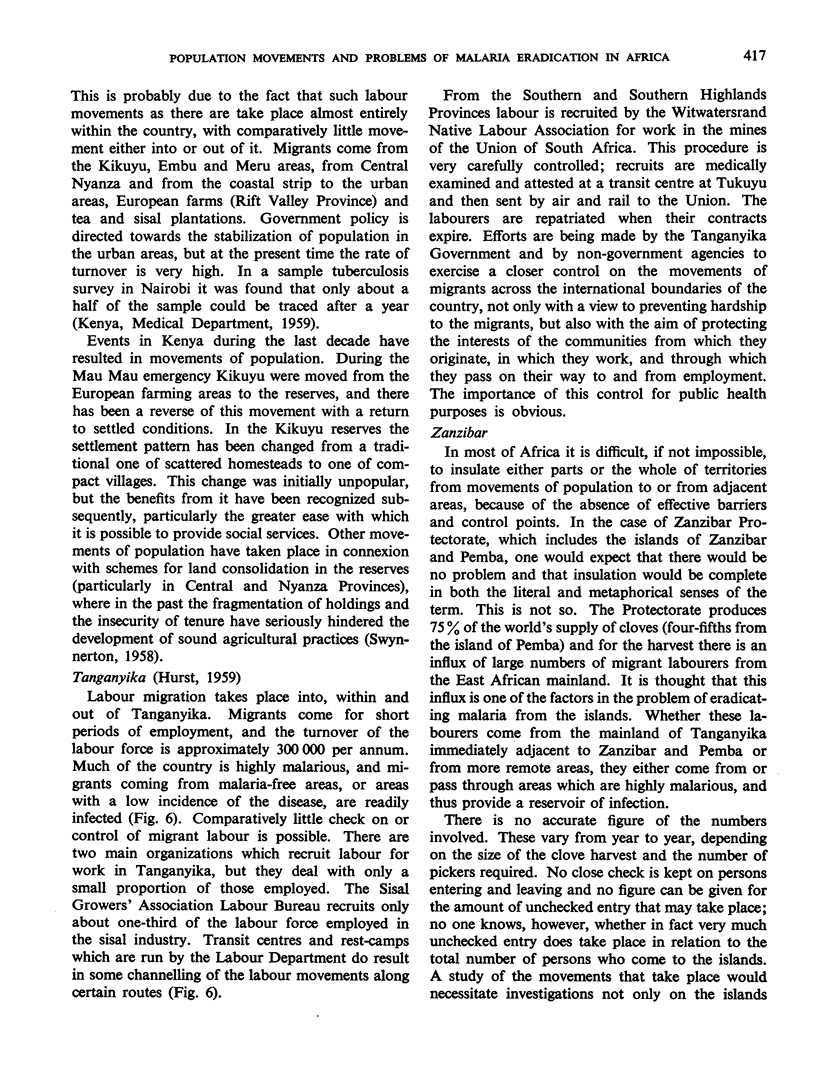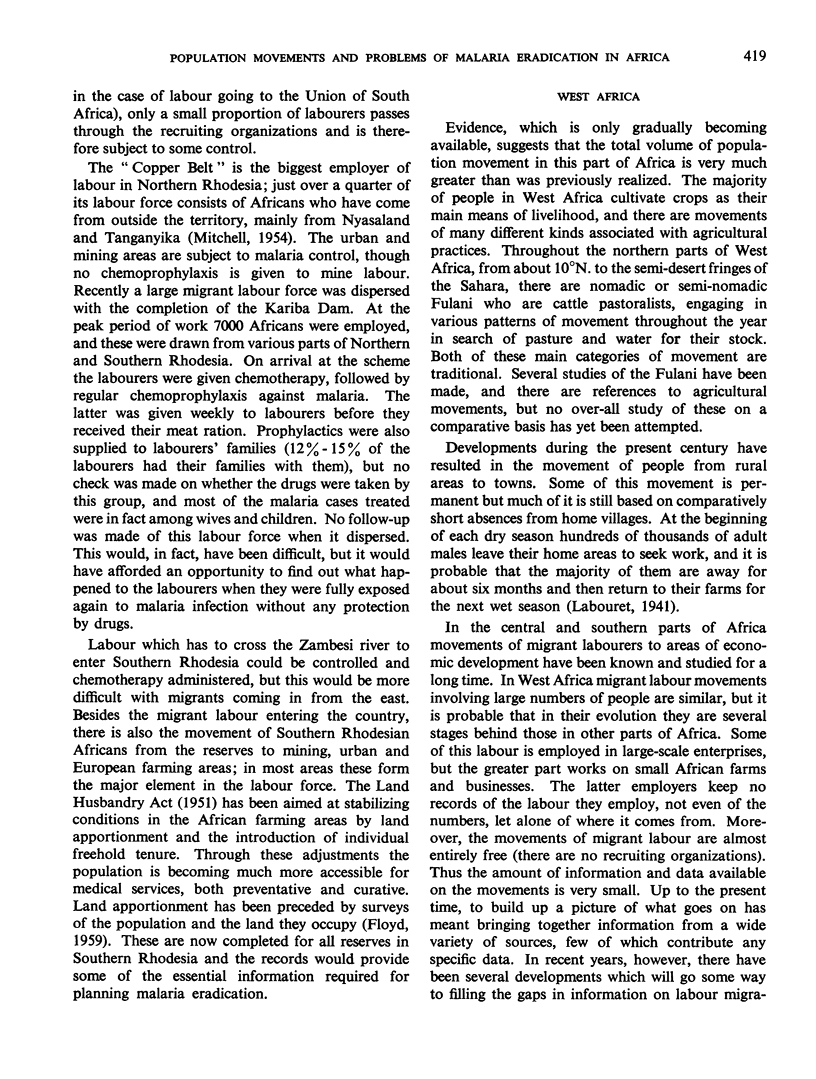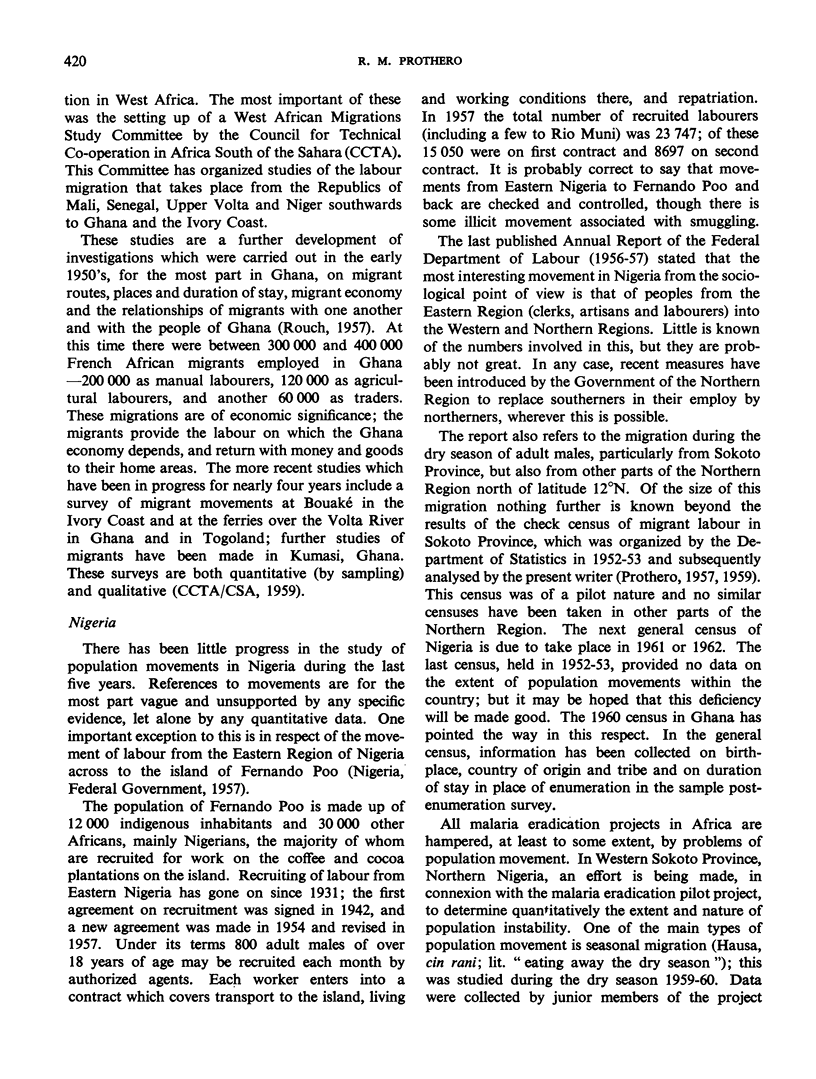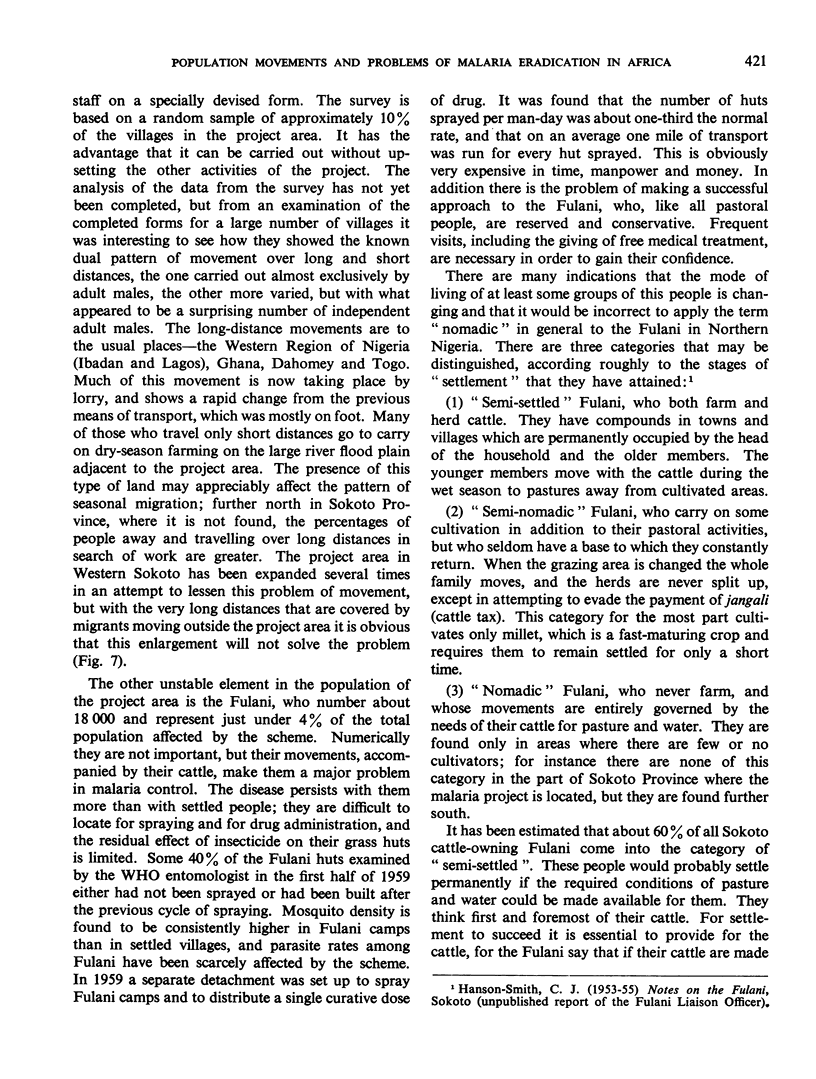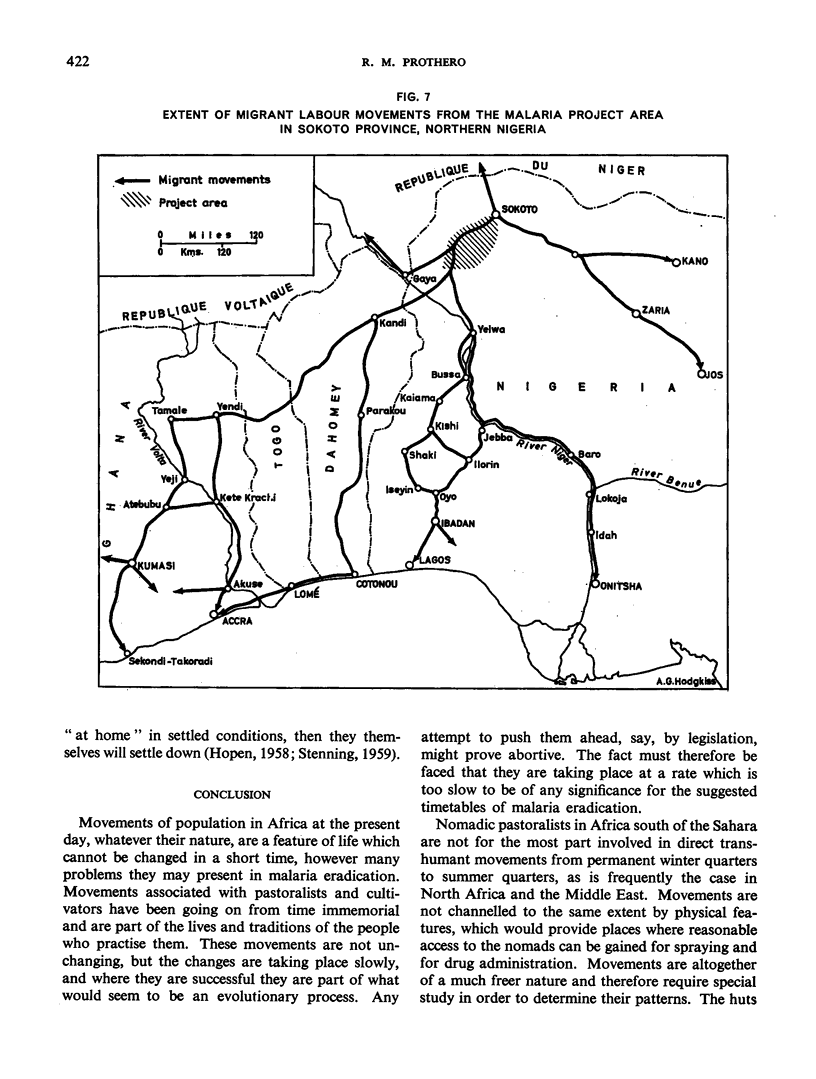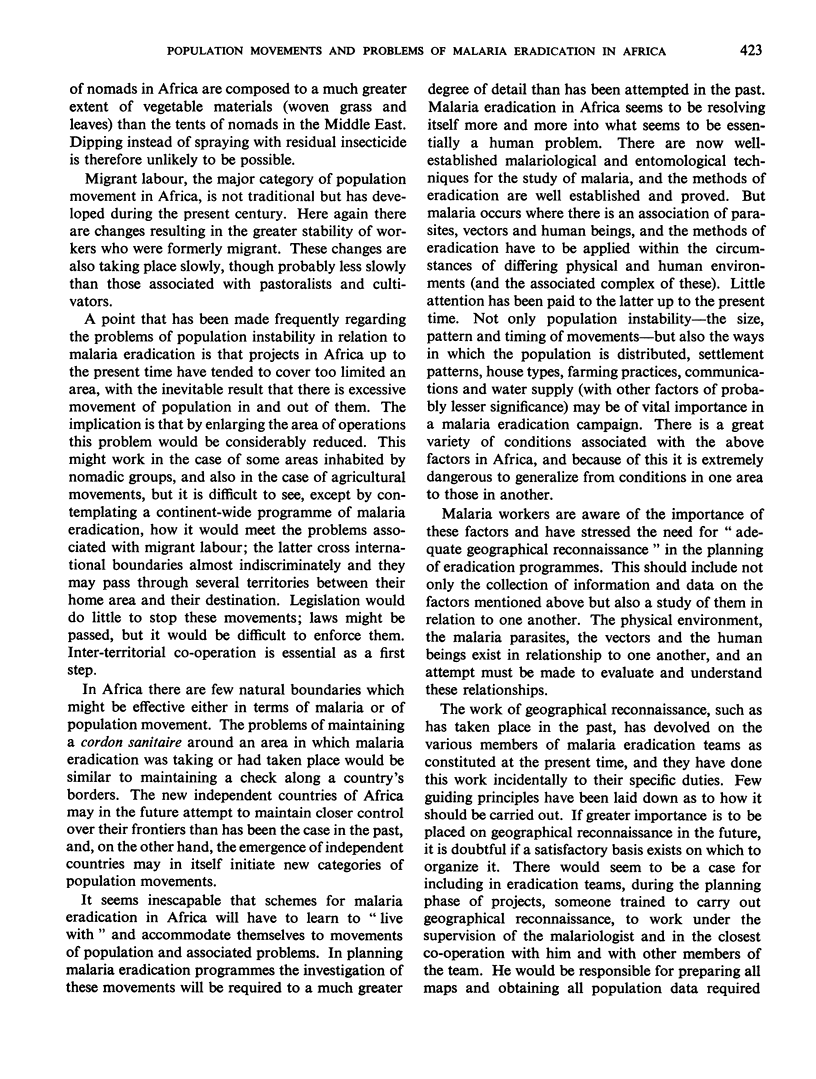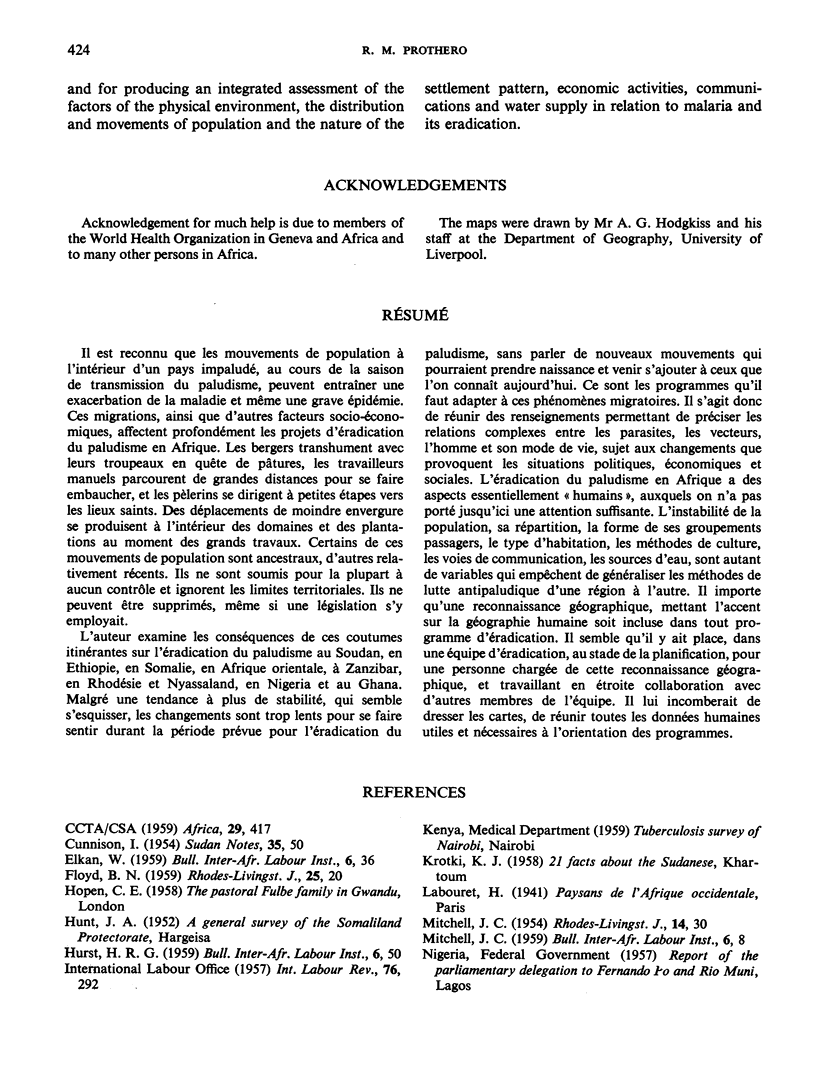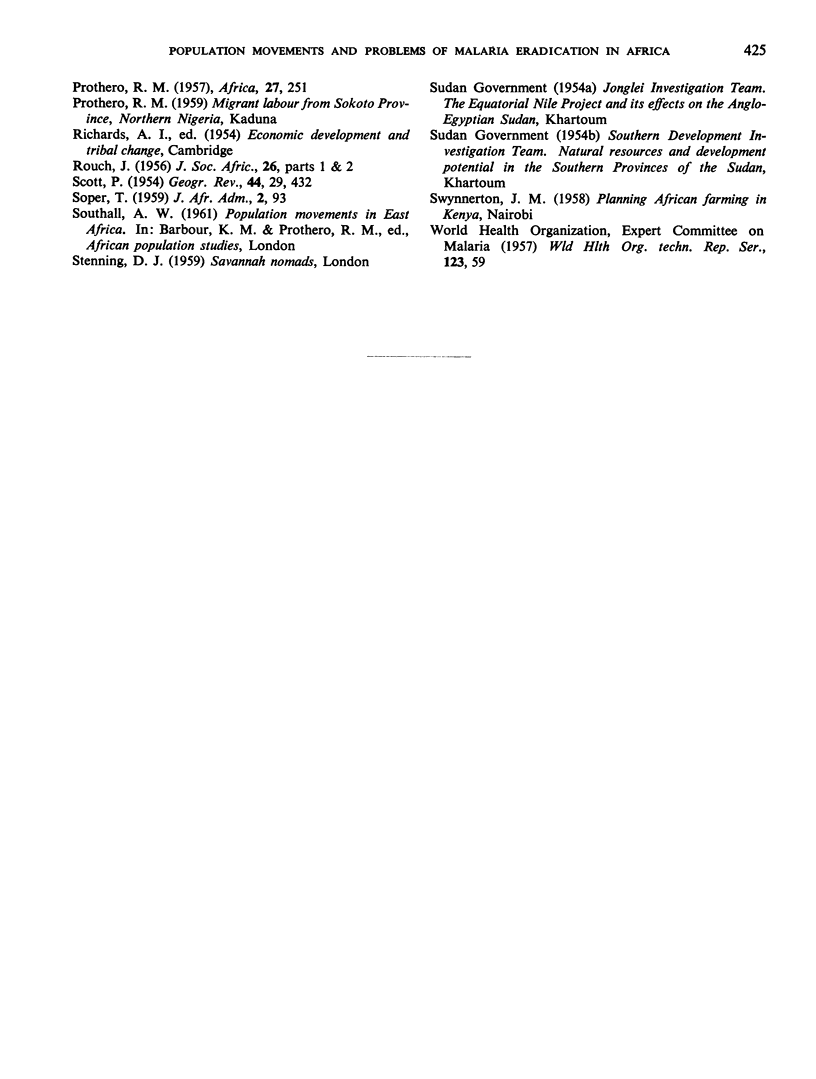Abstract
Population movements of various kinds are among the outstanding demographic features of the African continent and entail serious difficulties for malaria eradication. The majority of these movements are free and uncontrolled and are frequently inter-territorial in nature, hampering nation-wide or more limited malaria eradication projects and resulting in much reinfection.
The author examines in some detail the types of population movements and their relationship to malaria problems in the Republic of Sudan, Ethiopia, Somalia, East Africa, Zanzibar, the Federation of Rhodesia and Nyasaland, Nigeria and Ghana. He concludes that these movements cannot be stopped and must be taken into account in planning malaria eradication programmes. More information on them and on the complex relationships between parasites, vectors and human beings is required, and inter-territorial co-operation is essential in obtaining this information and in planning.
Full text
PDF
